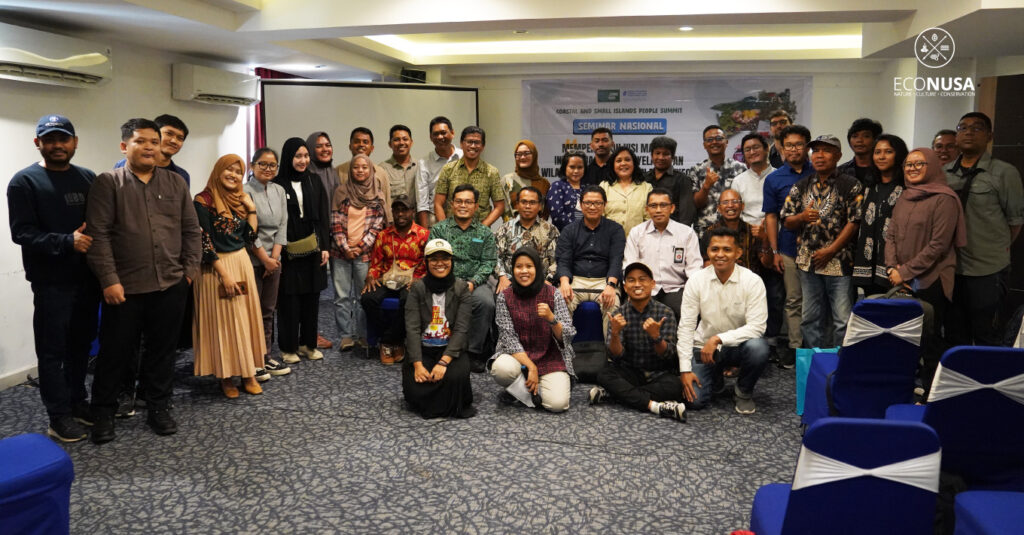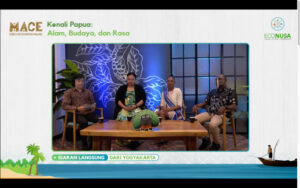
The Eastern Indonesian seas, situated within the Coral Triangle region, boast abundant biodiversity. This area is home to 76 percent of the world’s coral reef species, providing a habitat for a wide variety of fish. Additionally, the land in the Eastern Indonesian region is rich in metallic minerals. Islands like Obi in North Maluku and Wawonii in Southeast Sulawesi are abundant in nickel, while Sangihe in North Sulawesi holds a significant amount of gold. However, many challenges are faced by coastal communities and small islands inhabiting this region.
The environmental damage in Wawonii due to nickel mining for example, has caused detrimental effects. These activities have led to more serious issues such as the contamination of water sources that flow into the residents’ homes, mixing of water with mud, and encroachment on community gardens. For years, the people of Wawonii have resisted nickel mining activities and pursued legal action. In December 2022, they succeeded in a lawsuit regarding land use.
“Wawonii island should not have been included in mining areas, but in fact the mining was carried out. During the windy season, people in Wawonii cannot go to the sea to fish, so they can only depend on this land for their livelihood,” said Bustar Maitar, CEO EcoNusa Foundation stated his concerns during the National Seminar on Strengthening Indonesia’s Maritime Vision for Coastal, Marine, and Small Island Conservation, in Jakarta (7/9). The seminar was part of the second annual meeting of the Jaring Nusa coalition, which was supported by EcoNusa as one of their members.
Read Also: Civil Society Coalition Drafting Village Regulation to Protect Coastal Areas
Muh. Rasman Manafi, the Deputy Assistant for Coastal and Marine Spatial Management at the Coordinating Ministry for Maritime Affairs and Investment, also mentioned that the well-being of coastal communities is worse compared to non-coastal areas. “The percentage of people living below the poverty line in coastal areas is 11.02 percent, while in non-coastal areas, it is 8.67 percent,” Rasman explained during his presentation at the same event.
According to the Acting Director of Maritime Affairs and Fisheries at the Ministry of National Development Planning/Bappenas, Sri Yanti, coastal communities are also facing problems due to climate change. This includes rising sea levels, extreme waves, and coastal erosion. “Now it’s not just global warming; it’s already global boiling,” she remarked.

Sri then explained that the government has a vision for Indonesia called “Indonesia Emas 2045” which aims to make the nation sovereign, advanced, and sustainable. In the National Long-Term Development Plan (RPJPN) for 2025-2045, each maritime region is planned to have a different development direction. For instance, Sulawesi is envisioned as a support for the national capital’s economy and natural resource-based industries. Maluku is planned to become a maritime center for the eastern region of Indonesia, while the focus for Papua is to accelerate development towards a healthy, intelligent, and productive Papua.
Read Also: Jaring Nusa Urged Salvage of Coastal Communities and Small Islands in Eastern Indonesia
“Indonesia, as an archipelagic nation, needs to optimize its resources derived from the sea. One of the indicators to measure this is the maritime Gross Domestic Product (GDP), with a target of 15 percent by 2045,” Sri continued.
However, Asmar Exwar from Jaring Nusa mentioned that the maritime vision has not concretely ensured the protection and recognition of the rights of coastal and small island communities. In his view, making eastern Indonesia a cornerstone of resource-based development will increase vulnerability and susceptibility to exploitation.
“This is contradictory to the need for the protection of island and marine areas as an integrated ecosystem and a pillar of the livelihoods of local, traditional, and indigenous communities,” he stated.
Parid Ridwanuddin from the Jaring Nusa member said that RPJPN 2025-2045 would lose its constitutional anchor if it does not incorporate Article 33 of the 1945 Constitution, which mandates state control over coastal, marine, and small island resources for the greatest welfare of coastal communities.
Read Also: Jaring Nusa, Joint Movement for Eastern Indonesia’s Coastal and Small Island Communities
Therefore, he urged the government to take several steps in the preparation of RPJPN 2025-2045. First, to ensure that national development does not turn the sea into an arena for power struggle between the strong and the weak (mare liberum). Second, to avoid developing plans that are biased towards technocracy and do not incorporate the local and traditional knowledge held by coastal communities as an essential part of RPJPN 2025-2045. Third, to prioritize climate justice legislation in RPJPN as the primary regulatory framework and repeal various regulations that perpetuate damage, such as the Omnibus Law on Job Creation and the Mining Law.
Parid emphasized on the need to take the formulating and implementing these policies seriously by the government. If they prioritize projects that harm the coasts, the sea, and small islands, the consequences are inevitable, where more coastal villages sink, which, of course, affects coastal communities. “The year 2045, might be called Indonesia’s anxiety year rather than Indonesia’s golden age,” said Parid as a coastal and marine campaigner from WALHI.
Editor: Swiny Adestika







